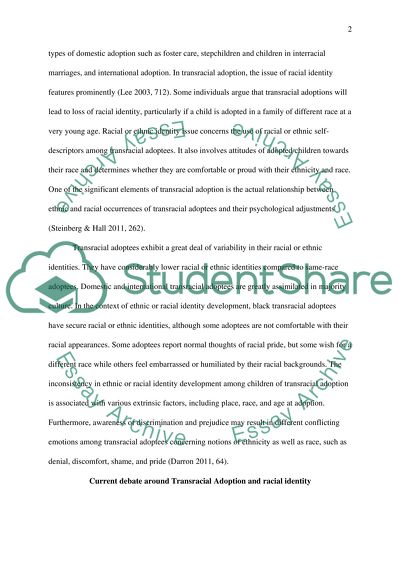Cite this document
(Challenges in Transracial Adoption and racial Identity Essay, n.d.)
Challenges in Transracial Adoption and racial Identity Essay. https://studentshare.org/law/1611780-social-work-critically-evaluate-its-implications-for-social-work-practice-in-challenges-in-transracial-adoption-and-racial-identity
Challenges in Transracial Adoption and racial Identity Essay. https://studentshare.org/law/1611780-social-work-critically-evaluate-its-implications-for-social-work-practice-in-challenges-in-transracial-adoption-and-racial-identity
(Challenges in Transracial Adoption and Racial Identity Essay)
Challenges in Transracial Adoption and Racial Identity Essay. https://studentshare.org/law/1611780-social-work-critically-evaluate-its-implications-for-social-work-practice-in-challenges-in-transracial-adoption-and-racial-identity.
Challenges in Transracial Adoption and Racial Identity Essay. https://studentshare.org/law/1611780-social-work-critically-evaluate-its-implications-for-social-work-practice-in-challenges-in-transracial-adoption-and-racial-identity.
“Challenges in Transracial Adoption and Racial Identity Essay”. https://studentshare.org/law/1611780-social-work-critically-evaluate-its-implications-for-social-work-practice-in-challenges-in-transracial-adoption-and-racial-identity.


